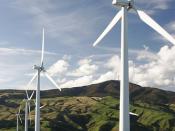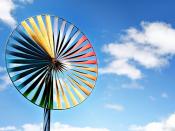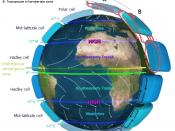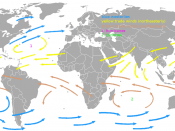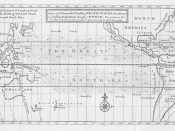Local WindLocal winds are winds occur where no other winds are, this happens in a small area. They are caused by EarthÃÂs surface being heated unequally. There are two basic types of local winds; one is a sea breeze that occurs when wind blows from water to land because the land heats up more quickly. The other type is land breeze; it occurs when land cools off faster than the water it is near and the air moves towards the water creating wind.
MonsoonsSea and land breezes that change direction with the seasons are called monsoons.
Global WindsWinds that blow from a specific direction are called global winds. One type is global convection currents. They happen when temperature differentiates between the north and South Pole and the equator produces great convection currents in the atmosphere.
Global Wind BeltsThe main global wind belts are trade winds, the prevailing westerlies, and the polar easterlies.
One type is the doldrums. Places near the equator with little or no wind are called the doldrums. Another one is horse latitudes. At approximately thirty degrees north and south latitudes, the air stops moving towards the poles and sinks. In each of these regions another belt of calm air forms. Hundreds of years ago sailors becalmed in these waters, ran out of water and food for there horses so they threw them overboard. That is why thirty degrees north and south are called horse latitudes. One other kind is trade winds. When cold air over horse latitudes sinks it makes high pressure creating trade winds. Also there are prevailing westerlies. In the mid latitudes, winds that blow in the direction of the poles are turned toward the east by the coriollis effect. Since they blow from west to east there are called the prevailing westerlies. The last kind is polar easterlies. When cold air sinks near the poles sinks and flows back towards lower latitudes, the corriolis effect shifts these winds to the west making polar easterlies.
Jet StreamsAbout ten kilometers above the EarthÃÂs surface are bands of high speed winds called jet streams. Jet streams move from speeds of two hundred to four hundred kilometers per hour.
BiblographyScience textbook
